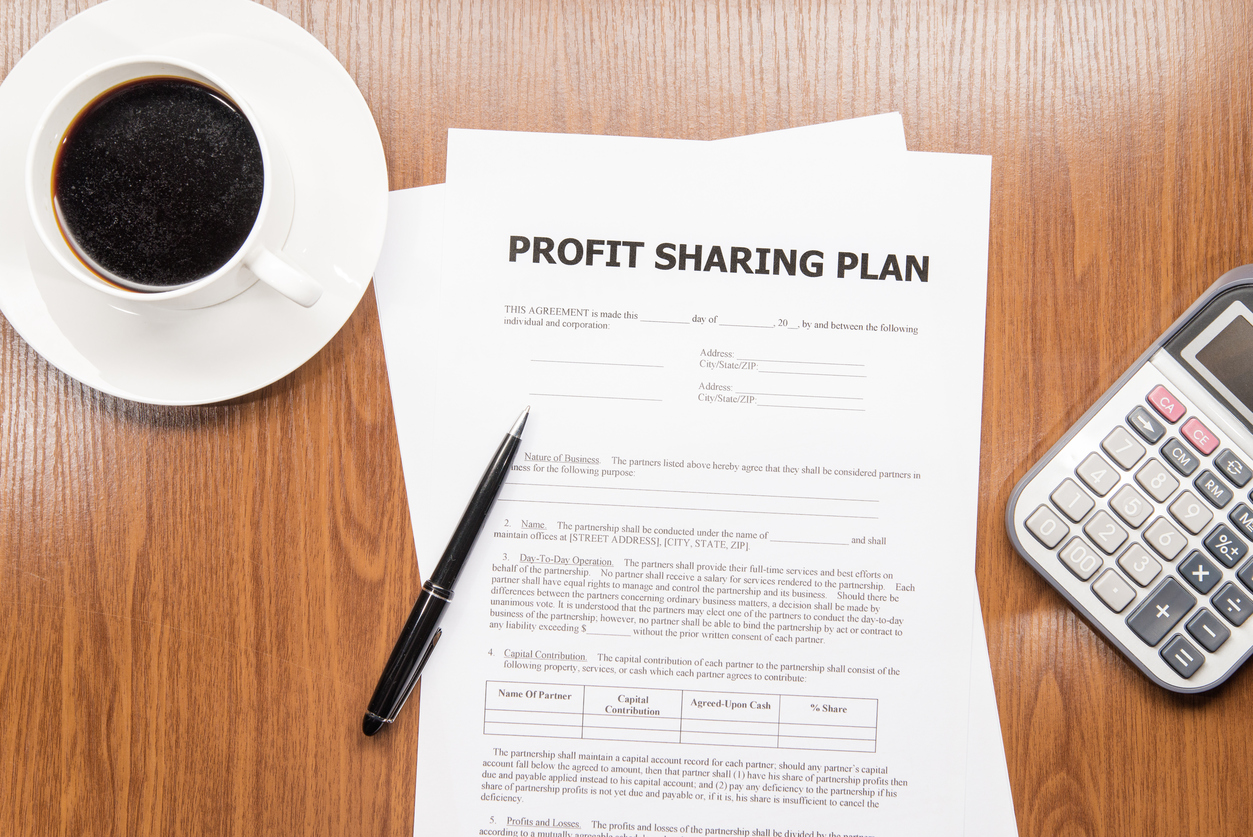After a great year, giving back to your employees can be very beneficial for your business. CNBC cites that “more than half of small business owners say that offering a [retirement] plan helps attract better employees.” A profit sharing plan is one way that you can use your business’ financial success to you and your employees’ benefit.

How Profit Sharing Works
Profit sharing and 401(k) plans go hand in hand. If you offer a 401(k) plan to your employees, you have the option to allow for a profit sharing provision. These provisions are typically set up to be discretionary so that you can decide whether you’d like to make a profit sharing contribution to employees at the end of the fiscal year. If you have a particularly good year, you can use some of that profit to make contributions to your employees. These contributions only take place after the end of a year so that you have the annual figures to determine what people made and the overall profitability of your business.
Despite its name, profit sharing is not based on the profitability of a company. A profit sharing plan allows you to take excess money after the end of a fiscal year and distribute it to employees’ retirement plans. These contributions typically come in the form of set percentages that are applied to each employee’s salary. For example, a profit sharing allocation of five percent would allow an employee who earns $50,000 in a year to receive $2,500. These percentages can be adjusted when you set up your profit sharing plan.
It’s important to note that these payments are not cash bonuses. Profit sharing payments are deposited to employees’ individual 401(k) accounts as a separate line item from employee contributions. If an employee doesn’t participate in a 401(k) but is eligible to receive profit sharing, an account is automatically created for that employee.
Another key aspect of a profit sharing plan is that contributions are made to all eligible employees. These eligibility requirements are set when you start the plan and can include open enrollment with eligibility for everyone from day one or a maximum wait time of one year.
One issue for owners is that they may not want to make contributions to all employees. You can exclude some employees, but there are IRS testing rules in place to ensure that you don’t exclude a certain percentage of workers. However, you can set different allocation models that can break employees into different groups with different contribution percentages. This can allow you to reward certain employee groups, such as executives or key personnel, while still making necessary contributions to other members of your company.
How Profit Sharing Benefits Business Owners
There are a few big reasons why you would consider making a profit sharing contribution after a good year. One of the benefits is that profit sharing is not a payroll item. If you have a fantastic year and want to save on taxes while rewarding your employees, profit sharing allows you to contribute money to employees without having to pay payroll taxes. This means you won’t pay into social security and Medicare, which gives you more bang for your buck and helps you shed some money for tax purposes. In addition to avoiding payroll taxes on profit sharing, you can also get a tax write-off on contributions as well.
Another advantage of profit sharing is that it’s an attractive tool to attract and retain employees. Retirement planning is one of the most attractive benefits according to a Gallup poll in Employee Benefits News, which is partially why the Society of Human Resource Management found that businesses increased retirement savings and planning benefits by 13 percent last year. Profit sharing is another way that you can reward employees after a successful year, contributing additional funds toward their retirement. You can also attach a vesting schedule to that profit sharing contribution that incentivizes employees to stay with your company.
For example, you could place a six-year vesting schedule for profit sharing contributions. Employees receiving those funds must be at your company for six years to keep all that money. If an employee leaves after two years, they’re only partially vested in that contribution. This gives your employees added incentive to stay at your company.
How to Invest in a Profit Sharing Plan
Like a 401(k), there are certain rules and regulations that you must abide by when managing a profit sharing plan. A Professional Employer Organization can help you manage the legal responsibilities associated with these benefits as well as determine what allocation models you can choose. Contact GMS today to talk to one of our experts about what we can do to help your business.